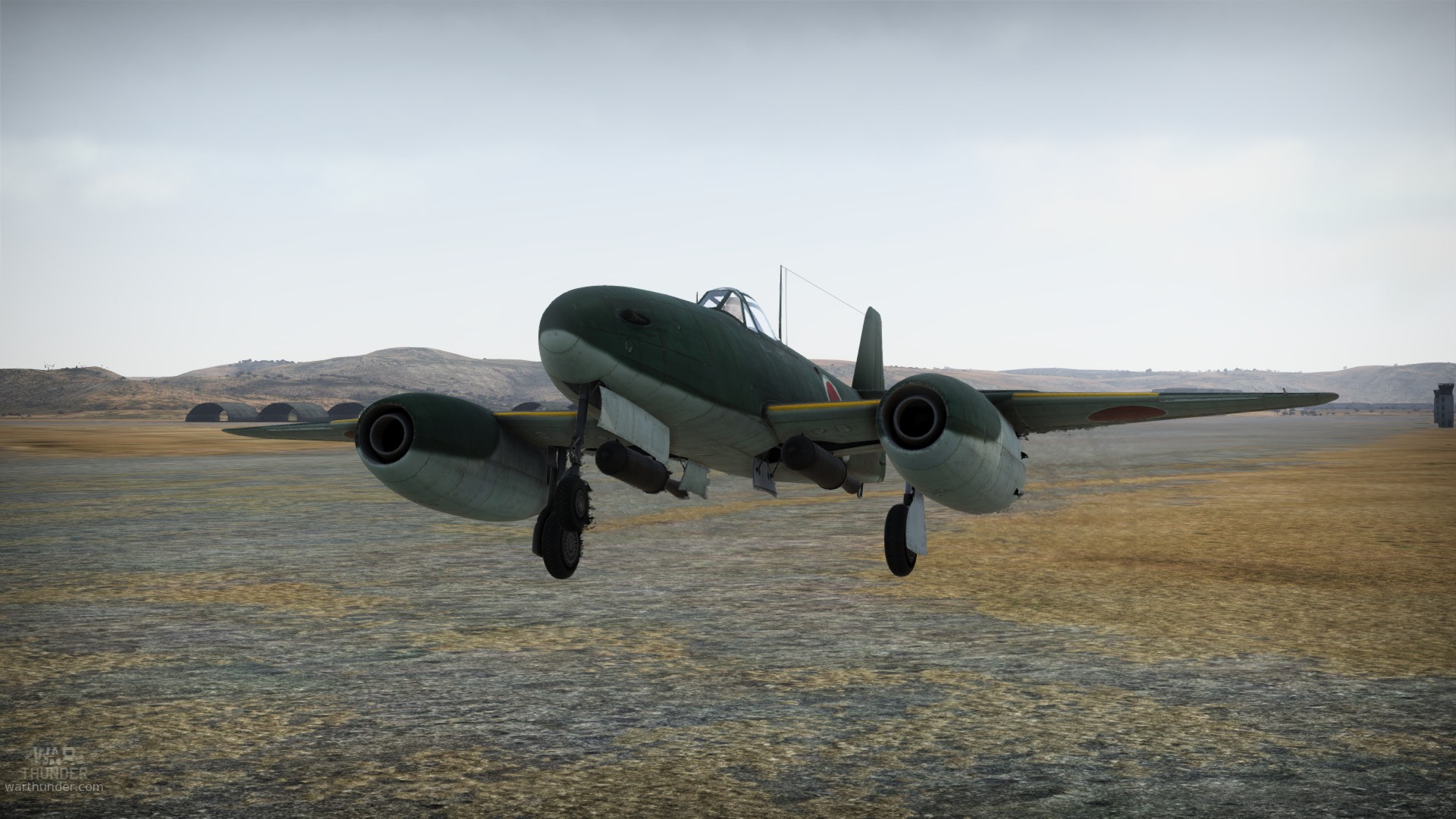
- For PC
- For MAC
- For Linux
- OS: Windows 7 SP1/8/10 (64 bit)
- Processor: Dual-Core 2.2 GHz
- Memory: 4GB
- Video Card: DirectX 10.1 level video card: AMD Radeon 77XX / NVIDIA GeForce GTX 660. The minimum supported resolution for the game is 720p.
- Network: Broadband Internet connection
- Hard Drive: 17 GB
- OS: Windows 10/11 (64 bit)
- Processor: Intel Core i5 or Ryzen 5 3600 and better
- Memory: 16 GB and more
- Video Card: DirectX 11 level video card or higher and drivers: Nvidia GeForce 1060 and higher, Radeon RX 570 and higher
- Network: Broadband Internet connection
- Hard Drive: 95 GB
- OS: Mac OS Big Sur 11.0 or newer
- Processor: Core i5, minimum 2.2GHz (Intel Xeon is not supported)
- Memory: 6 GB
- Video Card: Intel Iris Pro 5200 (Mac), or analog from AMD/Nvidia for Mac. Minimum supported resolution for the game is 720p with Metal support.
- Network: Broadband Internet connection
- Hard Drive: 17 GB
- OS: Mac OS Big Sur 11.0 or newer
- Processor: Core i7 (Intel Xeon is not supported)
- Memory: 8 GB
- Video Card: Radeon Vega II or higher with Metal support.
- Network: Broadband Internet connection
- Hard Drive: 95 GB
- OS: Most modern 64bit Linux distributions
- Processor: Dual-Core 2.4 GHz
- Memory: 4 GB
- Video Card: NVIDIA 660 with latest proprietary drivers (not older than 6 months) / similar AMD with latest proprietary drivers (not older than 6 months; the minimum supported resolution for the game is 720p) with Vulkan support.
- Network: Broadband Internet connection
- Hard Drive: 17 GB
- OS: Ubuntu 20.04 64bit
- Processor: Intel Core i7
- Memory: 16 GB
- Video Card: NVIDIA 1060 with latest proprietary drivers (not older than 6 months) / similar AMD (Radeon RX 570) with latest proprietary drivers (not older than 6 months) with Vulkan support.
- Network: Broadband Internet connection
- Hard Drive: 95 GB
Japanese efforts to build an efficient jet engine started before the beginning of the war in the Pacific. Early in 1940 Captain Tokiyasu Tanegashima from Kūgishō with help of the Mitsui Seiki Kogyo K.K. created a free piston compressor for a gas turbine based on a Junkers design, although it wasn’t successful as a means of aircraft propulsion it was a first attempt. Other attempts were carried under the leadership of Lieutenant Commander Osamu Nagano, head of the Kūgishō aircraft engine division and Mr Masanori Miyata, leader of Kūgishō Electric Section.
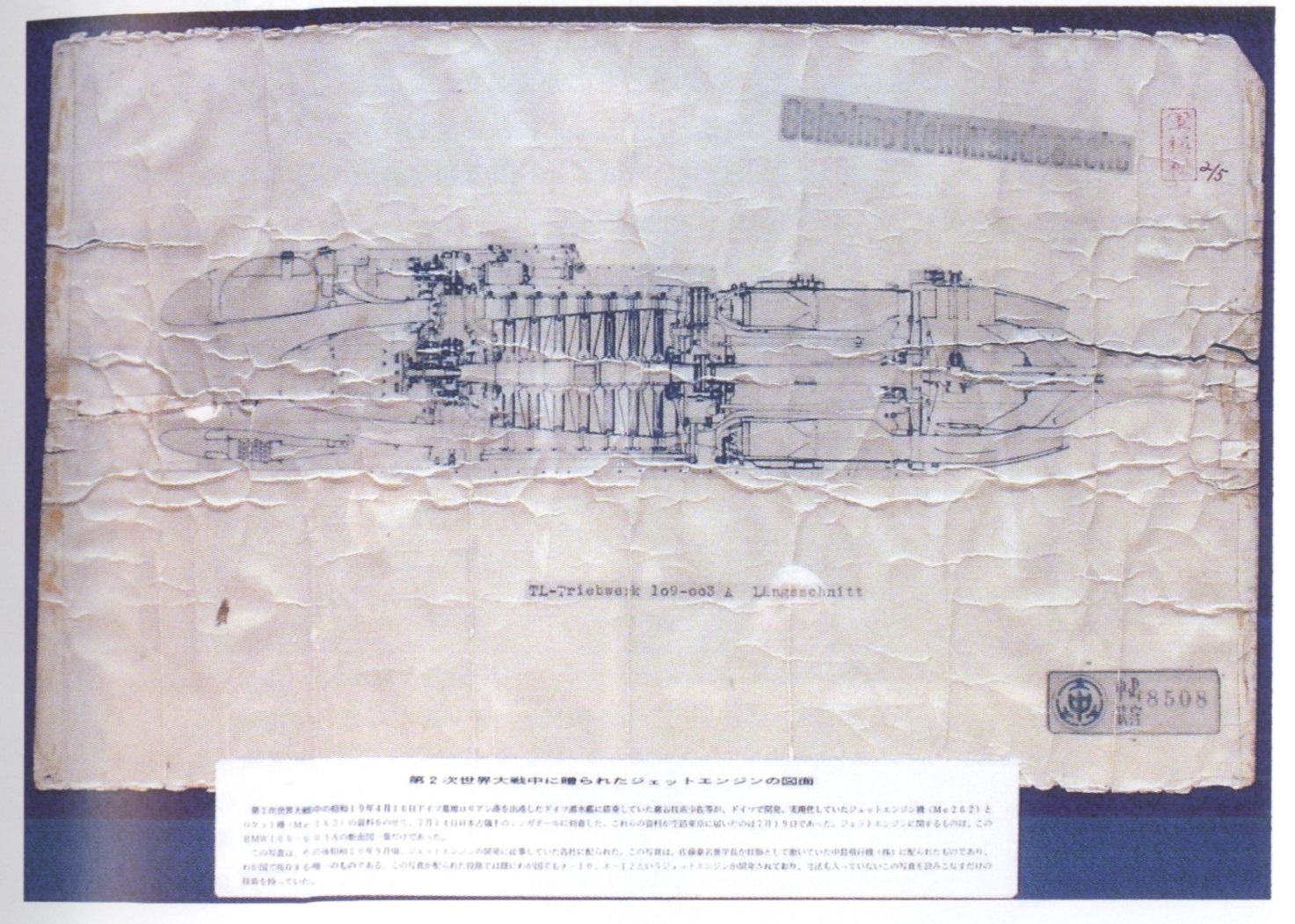 |
|
Cross-section of a BMW 003 for display in a musem in Japan |
These attempts to build a true turbojet engine eventually lead to the development of the TR-10, a small engine with a single stage, centrifugal compressor with a single stage turbine. This was constructed by Ebara Seizō K.K. and tested in the summer of 1943. Weighing only 250 kilograms, the engine was able to give 300 kgf of thrust at 16,000 RPM. It was the first step to build an aircraft powered by jet engine in Japan. Soon the engine was modified and with certain changes it was named the Ne-12B. This engine developed 320 kgf of thrust at 15,000 RPM which was the best the Japanese constructors could achieve at that time.
Eventually the Japanese realized that without the necessary technological boost to overcome the problems with low thrust and lack of experience, the task would not be easy if possible at all. In May 1944 the Japanese negotiated manufacturing rights to the Messerschmitt Me 262 and examples of Junkers Jumo 004 and BMW 003 turbojets. However, the Japanese submarine I-29 was sunk by US submarine after leaving Singapore, while carrying engines and one Me 262 example.
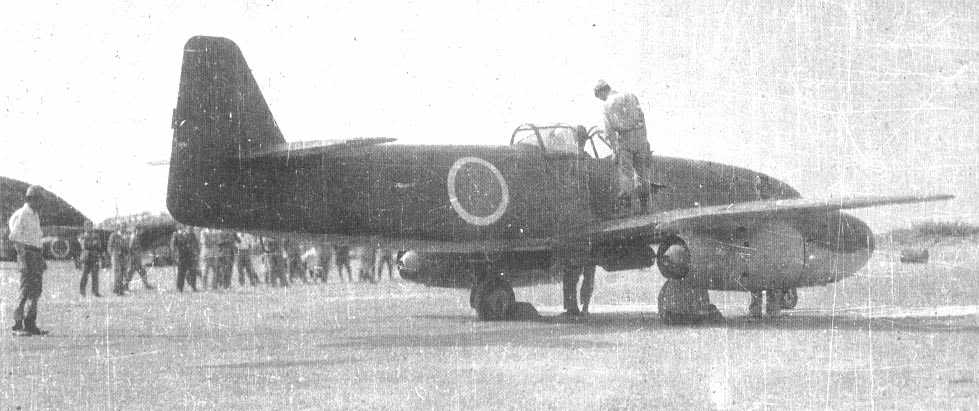 |
The only thing which survived with Commander Eichi Iwaya was a single copy of the cross-section of a BMW 003A. Based only on this and previous work with the Ne-12, Kūgishō managed to continue the development until the end of January 1945. Soon engineers and laborers began to toil day and night to build the Ne-20. On March 26 1945 the first Ne-20 engine was successfully tested in a cave set into a cliff in Yokosuka. The engine developed over 490 kgf of static thrust at 11,000 RPM, time to reach this RPM from the start was only 11 seconds. Finally an engine efficient enough for practical use had been developed.
The development of the Kitsuka airframe started on 14th September 1944, when Imperial Japanese Navy representatives met with Nakajima at Koizumi plant to discuss the concepts and idea. These ideas were put into practice on January 1945 when a wooden mock-up was ready for first inspection by Vice Admiral Misao Wada and his staff. Firstly, the aircraft was supposed to be powered by Ne-12B engines but soon it became obvious that the Ne-20 engine outperformed it and was substantially a better design. Soon changes were made and by the end of March the Kitsuka program entered its final stage. The first fuselage was completed on 25th April 1945 and stress tested.
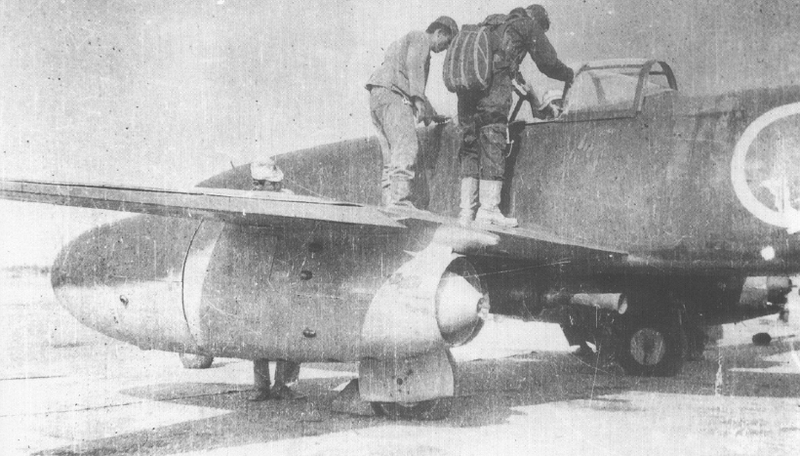 |
Aircraft without engines were completed by 25th June and prepared for testing. The fuselage was disassembled, loaded into trucks and moved to the Nakajima Koizumi plant where two Ne-20 engines were awaiting. On 27th June the aircraft was finally completed and declared as ready for testing. First testing of both engines on the aircraft took place on 30 June, although full testing could not be conducted due to restrictions of the runway. The aircraft had to be moved. Eventually the airfield at Kisarazu Air Base was chosen to be a place where the first Japanese jet aircraft would take-off. The aircraft was prepared for tests at the end of July, and on 27th Lieutenant Wada conducted some successful taxiing tests.
The final day was 7th August, the day after the Hiroshima bombing. It was an excellent morning with a 24 km/h southwest wind giving a crosswind blowing from the right across Runway 20, pointing towards Tokyo Bay. Kitsuka was only partially loaded with fuel to keep weight below 3150 kg, which allowed 16 minutes of flight. A special guest, Lieutenant Commander Susumu Takaoka, who was an experienced test pilot, climbed into the cockpit and prepared the machine for take-off. On his mark both Ne-20 engines were started and soon he was taxiing to the start of the runway. He lowered flaps to 20o and gradually increased the throttle to reach 11. 000 rpm, than he released the brakes and Kitsuka began to roll. No more than 25 seconds later the first Japanese aircraft propelled by jet engines was airborne. When Takaoka climbed to 610 m altitude, he levelled off and conducted the test which was carried out under strict restrictions not to exceed 314 km/h and retract the landing gear.
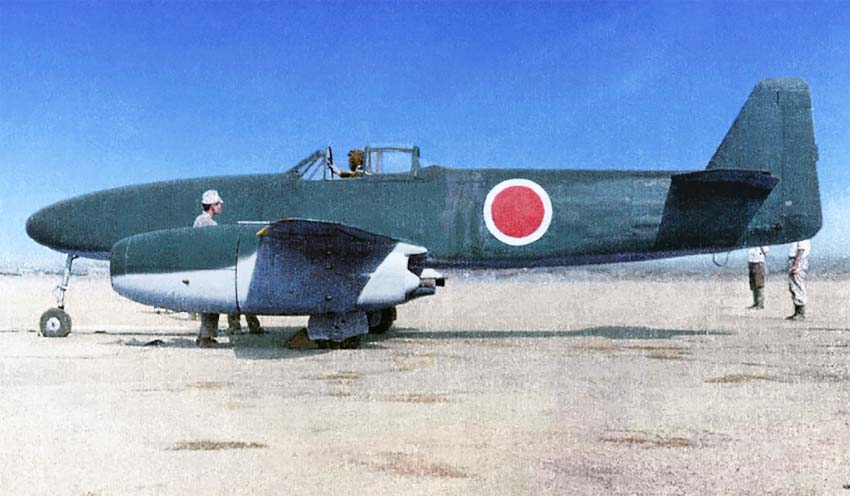 |
Observing the instruments in the cockpit he noted all of the important statistics and figures to give feedback to technicians and ground crew. In case of engine failure he circled over Kisarazu airfield. He also had to constantly throttle back to keep from exceeding the speed limit. A brief test of control sensitivity showed that rudder was rather stiff, ailerons were heavy but working and elevators were overly responsive. After completing the test Takaoka chose a long and shallow drop, extending the flaps to 40o and brought the turbojets to 7000 RPM. On touchdown he only needed moderate braking to bring Kitsuka to a stop, using only 600 meters of runway. He brought the machine to the ramp amid crowds of cheering spectators and ground crews. The total flight time was around 11 minutes and after reporting, Takaoka stated he experienced no problems with the engines and submitted his recommendations for improving the machine.
This short flight was a symbolic event bringing Japan into the jet era. Despite the dire situation Japan found herlself in at that stage of the war and both technological and material deficiencies, the Japanese managed to build a jet engine and eventually a successfully tested jet powered aircraft.
Michał “Hiromachi” Czubak
